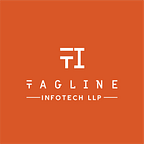Saas Architecture
Introduction to SaaS Architecture
Software as a Service (SaaS) architecture has revolutionized the way software applications are delivered and accessed over the Internet. In this article, we will delve into the intricacies of SaaS architecture, its components, deployment models, challenges, best practices, and future trends.
Understanding SaaS and Its Significance
SaaS is a software delivery model where applications are hosted by a third-party provider and made available to customers over the Internet. This eliminates the need for users to install, maintain, and update software locally, offering convenience and cost-effectiveness.
Components of SaaS Architecture
Frontend
The front end of a SaaS application comprises the user interface that customers interact with. It includes web pages, dashboards, and other graphical elements designed for ease of use.
Backend
The backend of a SaaS application consists of servers, databases, and application logic responsible for processing user requests, managing data, and executing business logic.
Database
The database component stores and manages the application’s data securely. It must be scalable, reliable, and capable of handling large volumes of data efficiently.
Multi-tenancy in SaaS Architecture
Multi-tenancy is a key feature of SaaS architecture where a single instance of the software serves multiple customers (tenants) simultaneously. This enables resource optimization and cost savings for both providers and users.
Scalability in SaaS Architecture
Scalability is essential for SaaS applications to handle increasing user loads without compromising performance. Horizontal and vertical scaling techniques are employed to ensure seamless scalability.
Security Measures in SaaS Architecture
Security is paramount in SaaS architecture to protect sensitive data and ensure compliance with regulations. Encryption, authentication, and authorization mechanisms are implemented to safeguard against cyber threats.
Importance of API in SaaS Architecture
APIs (Application Programming Interfaces) facilitate seamless integration between SaaS applications and other systems, enabling data exchange and interoperability. Well-designed APIs enhance the flexibility and extensibility of SaaS solutions.
Deployment Models of SaaS Architecture
Public Cloud
In the public cloud deployment model, SaaS applications are hosted on cloud infrastructure managed by third-party providers. This offers scalability, flexibility, and cost-effectiveness, making it a popular choice for many organizations.
Private Cloud
Private cloud deployment involves hosting SaaS applications on dedicated infrastructure managed by the organization itself. This offers greater control, security, and customization options but may require a higher upfront investment.
Hybrid Cloud
Hybrid cloud deployment combines elements of both public and private clouds, allowing organizations to leverage the benefits of both models. It offers flexibility, scalability, and the ability to tailor solutions to specific requirements.
Challenges in SaaS Architecture
Data Privacy and Compliance
Maintaining data privacy and compliance with regulations such as GDPR and CCPA pose challenges for SaaS providers, requiring robust security measures and adherence to industry standards.
Performance Management
Ensuring optimal performance and responsiveness of SaaS applications, especially under heavy loads, requires effective performance management strategies and monitoring tools.
Integration Issues
Integrating SaaS applications with existing systems and third-party services can be complex and time-consuming, requiring careful planning and implementation.
Best Practices for Building SaaS Architecture
Microservices Architecture
Adopting a microservices architecture enables SaaS providers to build modular, scalable, and resilient applications that can be developed, deployed, and updated independently.
Continuous Integration and Continuous Deployment (CI/CD)
Implementing CI/CD pipelines automates the process of building, testing, and deploying SaaS applications, ensuring rapid and reliable delivery of new features and updates.
Monitoring and Logging
Proactive monitoring and logging of SaaS applications help identify performance issues, security threats, and usage patterns, enabling timely intervention and optimization.
Case Studies of Successful SaaS Architectures
Salesforce
Salesforce is a leading SaaS provider offering customer relationship management (CRM) solutions to businesses worldwide. Its scalable architecture, robust security measures, and extensive customization options have made it a preferred choice for many organizations.
Slack
Slack is a popular collaboration platform that leverages SaaS architecture to deliver real-time messaging, file sharing, and project management features to users across different devices and platforms.
Future Trends in SaaS Architecture
The future of SaaS architecture is characterized by innovations such as serverless computing, AI-driven automation, edge computing, and blockchain integration, enabling greater agility, efficiency, and scalability.
Conclusion
In conclusion, SaaS architecture has revolutionized the software industry by offering scalable, cost-effective, and user-friendly solutions to businesses and consumers worldwide. By understanding its components, deployment models, challenges, and best practices, organizations can leverage the power of SaaS to drive innovation and growth. Whether you’re a startup, enterprise, or SaaS development company, embracing SaaS architecture can propel your business forward, enabling you to deliver cutting-edge software solutions that meet the evolving needs of your customers.
